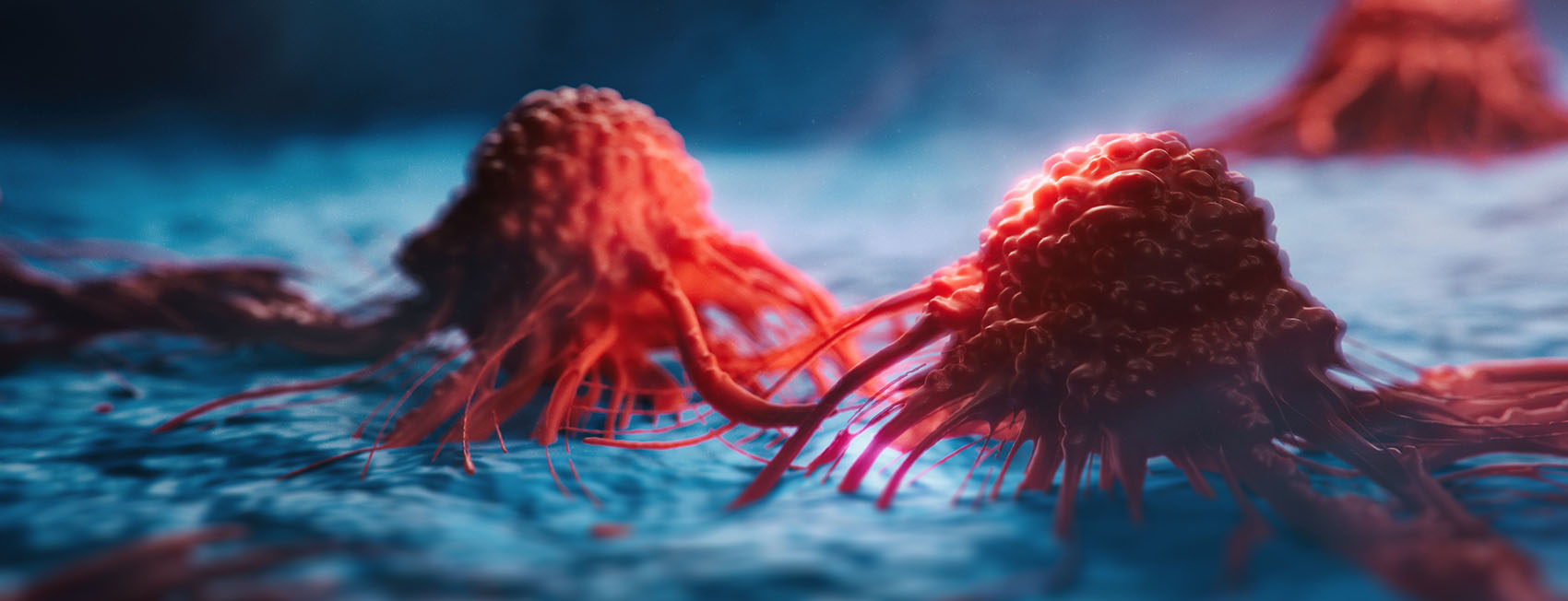After decades of effort, it is now possible for the first time to provide patients with KRAS G12C-mutated non-small cell lung cancer with an effective targeted therapy [1,2]. In the pivotal trial, the highly selective KRAS G12C inhibitor resulted in a rapid and sustained response in heavily pretreated patients [2]. The 2-year long-term follow-up also showed promising results [3].
Activating (KRAS) mutations* are the most common oncogenic driver mutations in non-small cell lung cancer (NSCLC). The most common of these is the KRAS G12C mutation, which is detectable in approximately 13% of all adenocarcinomas [2]. With the highly selective KRAS G12C inhibitor Lumykras® (Sotorasib), adult patients with locally advanced or metastatic non-squamous NSCLC with KRAS G12C mutation who have experienced progression after prior treatment with platinum-based chemotherapy and/or anti-PD-1/-PD-L1 immunotherapy now have access to an effective targeted therapy for the first time after decades of research. It is well tolerated and patient-friendly thanks to once-daily oral administration [1].
CodeBreaK 100: rapid and sustained response [2].
The open-label, single-arm, multicenter Phase II CodeBreaK 100 trial evaluated the efficacy and safety of Lumykras® in patients with locally advanced or metastatic KRAS G12C-mutated NSCLC whose disease had progressed on standard therapies. Patients with stable brain metastases were also included in the study. Patients received a once-daily oral dose of 960 mg Lumykras® until disease progression [2].
The primary endpoint was objective response rate (ORR), which was evaluated by an independent central committee according to the Response Evaluation Criteria in Solid Tumors (RECIST 1.1) criteria. The main secondary endpoints were duration of response (DOR), disease control rate (DCR), progression-free survival (PFS), overall survival (OS), and tolerability. With Lumykras® treatment, 37.1% of patients had an objective response (ORR; 95% CI: 28.6-46.2). Patients responded not only rapidly – within a median of 1.4 months – but also durably, with a median DOR of 11.1 months (95% CI: 6.9 – not evaluable). Lumykras® measured a decrease in tumor burden in 82.3% of patients (Figure); patients who responded to Lumykras® treatment showed an average tumor reduction of 60%. Treatment achieved a median (m)PFS of 6.8 months (95% CI, 5.1 – 8.2) [2].
In the 2-year long-term follow-up of 174 patients from the above-mentioned phase II and from the phase I study, the ORR increased to 40.7% (95% CI: 33.3 – 48.4) with an mDOR of 12.3 months (95% CI: 7.1-15.0). A DCR of 83.7% (95% CI: 77.3-88.9) was achieved and the mOS was 12.5 months (95% CI: 10.0 – 17.8). The OS rate after the first year was 50.8% (95% CI: 42.8-58.2) and 32.5% (95% CI: 25.0-40.2) of patients were still alive after the second year [3].
*KRAS=Kirstenrat sarcoma virus oncogene homologue

Figure: Treatment response in the CodeBreaK 100 trial measured as best percent change from baseline in tumor burden in 121 evaluable patients. NE=not evaluable, PD=progressive disease, SD=stable disease, PR=partial response, CR=complete response. Adapted from [2]
Favorable tolerability profile also from the patient’s point of view [2,4]
The overall safety profile of Lumykras® proved to be well manageable. Treatment-related adverse events (TRAEs) occurred in 69.8% of patients and were mainly mild (≤ grade 2). The most common TRAEs reported with Lumykras® were diarrhea (32%), nausea (19%), and elevated liver enzymes (15% ASAT, 15% ALT). Treatment-related treatment discontinuations occurred in 7% of participants [2]. No new safety signals were registered in long-term follow-up [3]. Also, the majority of study participants reported no distress from adverse effects of Lumykras® treatment in a health-related quality of life questionnaire [4].
Conclusion
After more than 40 years of research, the approval of Lumykras® makes targeted therapy available for the first time to NSCLC patients with KRAS G12C mutation [1]. This shows promising clinical results in the CodeBreak100 trial and long-term follow-up compared with historical treatments in NSCLC [2, 3, 5]. The KRAS G12C inhibitor can achieve a rapid and sustained response even in heavily pretreated patients, while also having a favorable safety profile when used orally [1-3].
Literature
References can be requested through professionals at medinfo-ch@amgen.com.
CH-510-0322-00007
Brief technical information Lumykras®
Contribution online since 12.05.2022












